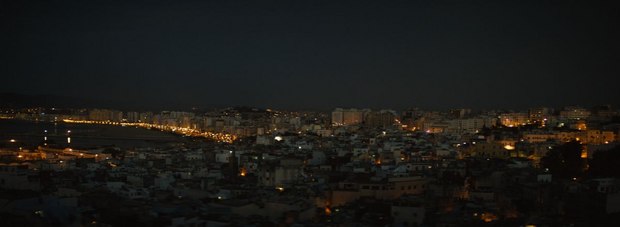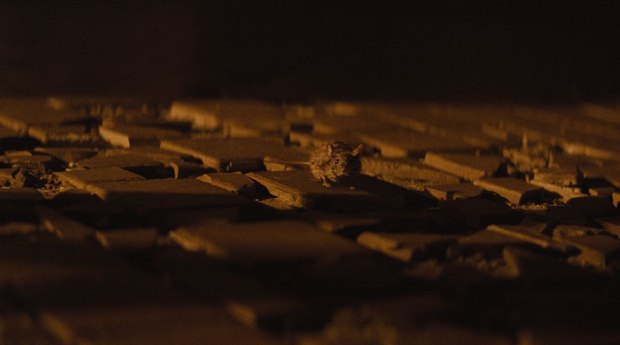Overall VFX supervisor talks about key visual effects sequences in Sam Mendes’ latest hit in the James Bond film franchise.

‘Spectre.’ All images © 2015 Metro-Goldwyn-Mayer Studios Inc., Danjaq, LLC and Columbia Pictures Industries, Inc. All rights reserved.
Early on in his career, Spectre VFX supervisor Steve Begg was part of the model units for movies such as Aliens and Landslide. According to Begg, “I am biased towards miniatures [when appropriate] but I felt that some stuff I would have done as miniatures in the past, thanks to technological developments, I wouldn't do now. With collapsing buildings, in particular, I wasn't confident in doing them as miniatures anyway as in my experience I haven't seen one done realistically without it looking like a load of Lego collapsing. Even the one we did in Casino Royale, which I thought worked, was really subsiding not collapsing. However, if the building was blowing up that would be a different story. The big problem is it has to be structurally strong enough to support itself yet weak enough to break up in realistic chunks and debris. That's just not easy to construct and engineer in the real world, particularly in a smaller scale.”
Spectre reteams Begg with filmmaker Sam Mendes and the James Bond franchise. “The post visual effects approach was embraced more on this one, I guess, because Sam was more comfortable with VFX thanks to Skyfall,” says the VFX supervisor. Mendes would describe in great detail what was needed while allowing room for creative collaboration on the production of over 1500 visual effects shots. Begg notes, “There was extensive previs supervised by Brad Blackbourn of IO Entertainment, for the opening sequence mainly, as it featured not only the highest numbers of VFX shots but also the most complicated. I wanted to nail the continuous ‘opening shot’ early on by getting Sam and Hoyte Van Hoytema [the film’s cinematographer] to understand the problems and requirements in blending six shots together. The Helicopter Sequence was also heavily prevised as I had always intended to shoot the more dangerous stunts over an airfield a hundred miles south of the Zócalo square in Mexico City, and replace the airfield with our CG Zócalo square, which we did. The previs helped Sam understand this technique in a much clearer way. Postvis supervised by Matt Tinsley was used extensively during the shoot to fill in greenscreen holes and to clarify our VFX intentions for later on.”
The film’s opening sequence resembles something more out of Birdman than James Bond. As Begg explains, “We had to blend together six shots as well as Daniel Craig and a lady friend going into a bedroom from a Mexico hotel location to a Pinewood set piece. We never really lost sight of him, which normally helped with the blend-wipes. Thanks to the attention to detail by Steadicam operator Julian Morson, Sam chose a take were their body positions, camera distance and motion matched from one cut to another. We also had the old standby trick of having some greenscreen people in a separate element pass close to the camera to help hide the wipe but thankfully that was not needed and if anything, they helped to highlight the fact that some trickery was going on. The wipe worked better without them.”
Most of the film’s locations are real apart from the Spectre Crater base and the climax on Westminster Bridge. “Both had real location elements but heavy augmentation, particularly the interior of the Crater, which was a big ILM number. There were shapes and small set pieces for the actors to relate to on location in the Moroccan desert but otherwise it was an ILM CG construct, crater walls and buildings,” states Begg. “The Westminster Bridge action mainly took place on a huge set piece on the 007 Stage at Pinewood. DNeg's main job was to blend this set with the real location. Both situations made it impossible to use greenscreens because of scale, lighting or physical limitations, so we relied heavily on rotoscoping which both companies did a terrific job on.”
Visual effects, stunts and special effects had to be successfully combined to create believable action scenes. Notes Begg, “On a Bond film, that is my primary job. It usually starts with a stunt or practical effect that needs a bit of invisible CG sellotape to blend the lot together. The great thing is that it all starts in the real world and has to have a real world feel, so if it looks lightweight and animated, then we've failed.”
A dramatic aerial and land chase takes place on a wintery mountain landscape. “MPCs biggest challenge in this sequence was the integration of a CG version of the snow plane with its real world counterparts,” explains Begg, whose task was complicated by the aircraft having a black shiny paint job. “We shot all the close-ups of Bond in the gimbal mounted prop version on a VFX stage, and the moment we saw anything of its exterior we would see reflections of the studio lights and camera crew. MPC successfully wrapped their CG fuselage around this prop and reflected the non-existent moving alpine environment and trees onto its surface and windows, giving the studio shots a believable air to air helicopter camera feel. We switch to the full CG model of this plane in the action for a series of wider shots when the plane drops below the tree line.”
“The touch and go bounce of Bond’s plane in front of the bad guys’ Range Rovers, causing one of them to crash and the other to veer off, used MPC’s full CG plane model,” Begg continues. “It had to intercut back to back with the real plane and a practical effects full scale model plane on wires used for the shots where the plane loses its wing tips as it tries to fly between a narrowing roadway of trees. Subsequent shots with the grounded wingless plane continuing to pursue the Range Rovers used a prop with a skidoo snowmobile inside propelling it along. CG propellers, snow wakes and plumes of black smoke coming from the thrashed engines were also added to heighten the action. Continuity issues with the snow on trees and rooftops due to differing snow fall during the six week shoot was also addressed with a series of 2.5D matte paintings throughout this sequence.”
Begg and his team had to contend with image distortion on the plates, the result of live-action filming with anamorphic lenses. “The biggest overall issue we had on the tech side was the use of film and 2.40 aspect anamorphic lenses,” remarks the VFX supervisor. “The severe distortion, particularly at the edges of the image, was an issue. There is absolutely nothing new here problem-wise except that the wide-open aperture and shallow depth of field style of the cinematography makes the night time and interior shots look gorgeous, but created some tracking and compositing issues.” To find effective ways around this issue, Begg had conversations with key members of the production team such as Van Hoytema, production designer Dennis Gassner and film editor Lee Smith. As Begg explains, “In pre-production, we worked a lot with Dennis on the look and design of the various artefacts and extensions we would have to add to sets and locations. Then on the shoot, I would literally shadow Hoyte and request that certain things be switched off or minimised during principal photography, like smoke on big VFX shots, and big lights shining down the lens causing lens flares, which he kindly did. Then the opposite happened when I told him not to worry about stuff that I thought would be easy to fix in post. In post, we would get a helpful take from Lee on how something would cut or work better if we shifted something a few frames this way or other.”
Begg’s work on Spectre brought together the talents of a number of top VFX studios. “I was keen to work with ILM London for one of their first non-Star Wars jobs, which they successfully came up trumps,” he notes. “Because of the shrunken post-production time I knew we needed the firepower and talent of DNeg and MPC. Helping this was Cinesite, which did, among other complicated things, a photo-real CG mouse, and my old allies Peerless Camera Co.” Digital assets were shared between the different visual effects companies, who according to Begg, exchanged “CG head, body scans and textures mainly, which the vendors would then customise to suit their requirements.”
--
Trevor Hogg is a freelance video editor and writer best known for composing in-depth filmmaker and movie profiles for sites such as the CGSociety, 3DTotal, Live for Films and Flickering Myth; he is a big fan of Raiders of the Lost Ark, Batman: The Animated Series, The Hobbit, Studio Ghibli, and Peter Weir.



















































